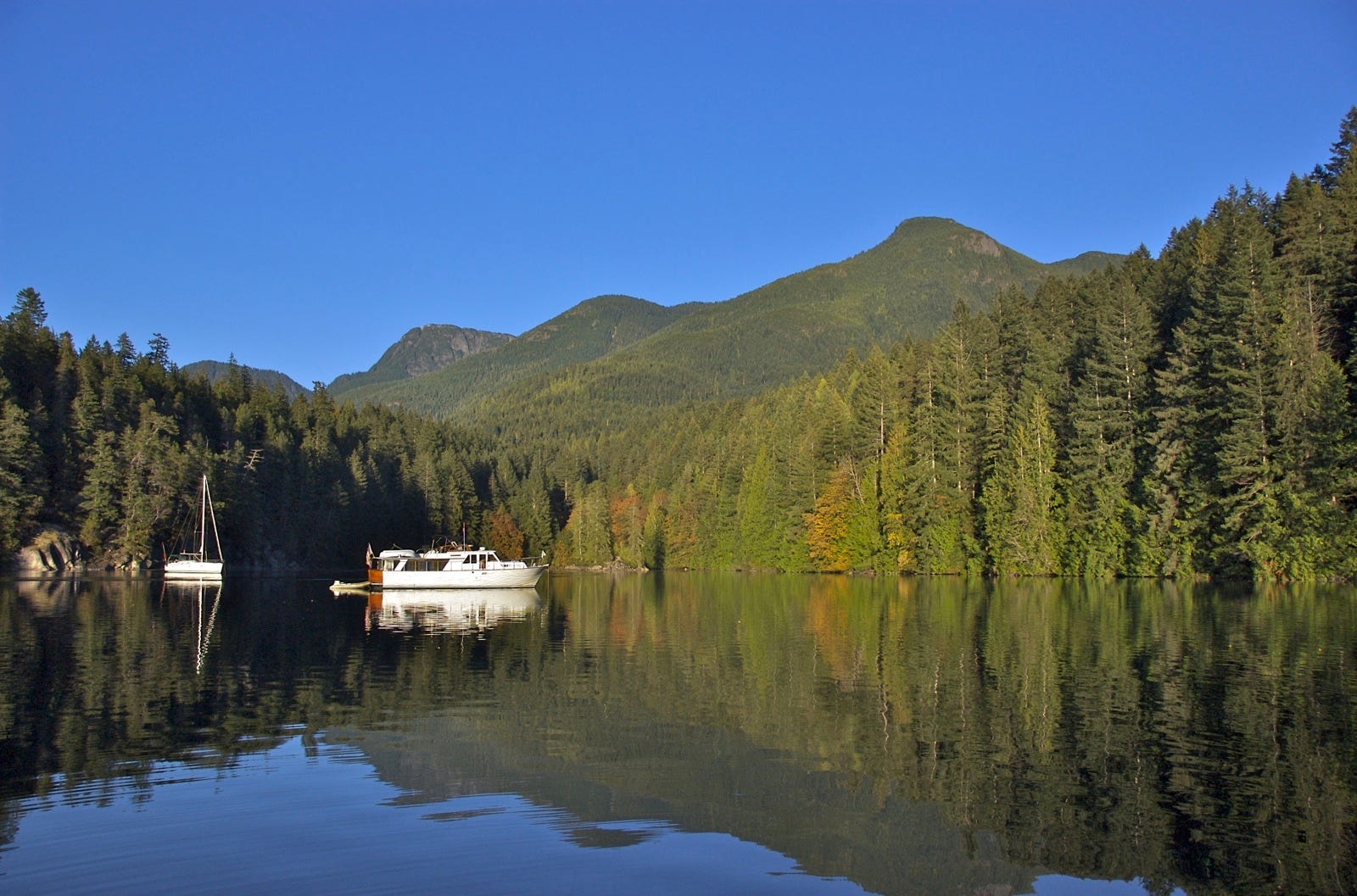Stories at Sea is a series of interviews highlighting artisanal fishermen, fisheries, and suppliers who are furthering the seafood industry within Canada. We are here to tell their stories and to pass on their wisdom to the greater community.

Island Sea Farms is one of the first successful mussel farms in British Columbia- in part due to their pioneering techniques in hatchery and sustainable farming operations. They harvest the famously plump and sweet Saltspring Island Mussels, and their Ocean Wise product can be found globally, from Belgium to Japan. Through their cutting edge technology and passion for the environment and their island communities, Island Sea Farms is leading the way for shellfish aquaculture.
We sat down with Paul Simpson, their owner and operator, to hear more about the discovery of the Saltspring Island Mussel, how they are using mussels to combat climate change, and what it takes to make it as a harvester in today’s world.

Hayley from Coastline: What got you into the fishing industry?
Paul Simpson: I’ve always loved food production. I studied agriculture in high school. Growing up on the water exposed me to shellfish in particular and the romance behind the fishing lifestyle.
I got my start in the industry as a deckhand to one of my father’s medical patients. He had recently lost his son in an accident and was completely distraught. It had been their family tradition to salmon fish together every year. With no one to help fish and a heavy burden to carry alone, I thought I could be of help. That season I learned not only the ins and outs of salmon fishing but also what business integrity looks like. He was obsessed with quality to a level I had never seen before. This trip hooked me on the industry and the lessons learned there I take with me every day.
Can you tell us a bit about the founding of Island Sea Farms and how the Salt Spring Island Mussel got its start?
To start really from the beginning, would be to start in Japan. My brother had insisted I look into getting my MBA. Before I knew it, I was enrolled at UBC and I had received a scholarship for entrepreneurship- to further study the fishing industry. During these years it’s common to go abroad, with most people heading to England. I instead wanted to go to Japan to study the fish markets, starting in Hokkaido and expanding to the other larger markets that exist in Japan. At the time, I was one of the only foreigners allowed to be on the ground level of the markets like that. They are a culture steeped in tradition and most people do not get to see the operation on that same level.
I spent over 12 years in Japan, doing various consulting projects for fisheries, independent companies, and the government. I came back to BC when I realized I wanted my children to have the same Salt Spring childhood that I had. When returning to BC, I shifted industries, working for a real estate tech firm. Soon enough, I was drawn back in, this time to start my venture.

The idea for the farm started from an old Japanese scallop hatchery manual that I was gifted during my time working at a hatchery in Hokkaido, Japan. I was able to translate this to serve as my north start when building out the farm. In regards to a location, I turned to the father of shellfish, Dr. Neil Bourne. He advised me to look where the Weathervane Scallops grew, which happened to be just 2 miles from where I grew up on Salt Spring Island. These waters were protected by the Barrier Islands and the Fraser River Delta. Now I just had to find what mussel species we were going to harvest. I found a great prospect off the coast of Washington in the US. They were the next level in taste and quality.
Unfortunately, we were unable to get the necessary governmental approvals, forcing us to find another source. I decided to start looking in Genea Bay and was able to find and test a naturally growing Mytilus mussel species, also known as Gallo Provincialis. Because this mussel was relatively unknown in BC, no one had been targeting it for farming. After a year of research with the government, we received our aquaculture license and began to grow this mussel. In 1998, we built our small hatchery on the island, collected our first brood-stock, and began our research with spawning and nursing.
Over the next few decades, Salt Spring Island’s residential community grew tremendously. Unfortunately, this meant more people, more recreational water use, and diminished space for our farm and operations. Ultimately, this led us to relocate the farm to Discovery Islands (Desolation Sound), while maintaining our hatchery and offices in Salt Spring. This ended up being a blessing in disguise because it’s the perfect location for shellfish farming.

Nowadays, we are constantly experimenting, with two full-time staff dedicated to managing data and analyzing results. We utilize smart technology and the cloud everywhere from our farm to our nursery to the offices. We’ve learned so much from the data. We can acquire live and pure biopsies from different mussel families to use for spawning experimentation. We have followed these family lines for many years in our database and can spawn different hybrids to emphasize different traits and taste profiles. We can optimize size, sweetness, and seasonality based on different combinations of family lines.
This is how we eventually came to the Salt Spring Island Mussel, which we all know and love today. The theory was if we were able to cross-breed two pure species, we could produce something truly unique for BC. In 2005, we bred a hybrid of the original Gallo Mussel we were farming and of the Atlantic Blue or “PEI Mussel”. This new hybrid has the best characteristics of both varieties and its beautiful shell colours range from deep blue-black to almost golden. Ultimately, our drive for innovation and science enabled us to be the only farm in the world to farm mussels from 100% hatchery seed. All other farms rely on wild seed for their hatcheries today.
Why Mussels in particular?
People see it as dirty food, but it’s really a superfood. It’s high in protein, has no fat, and is rich in Omega 3s.
We see ourselves as alchemists, using our mussels to convert CO2 to oxygen. Carbon crawls at the bottom of the ocean, like an army, and moves its way upward through the ocean carbon cycle. Mussels take CO2 and convert it to oxygen. They are our natural sponges and are the first line of defence.
We’ve got some major problems ahead, especially with the risk of algae. CO2, coupled with the organic and mineral nutrients in our oceans, is a hotbed for algae growth. If we don’t get our CO2 levels under control, we will see a perfect storm for algae. This has wide-reaching effects on humans, marine, and freshwater life. Algae can produce toxins, poisonous for consumption, and can cause anoxic conditions where oxygen is depleted from the waters killing off oceanic life. Their blooms can also block light to organisms lower in the water column.

What does a day in Paul’s shoes look like?
I bounce back and forth between the different parts of the business: the farm, the hatchery, the processing plant, and the offices. I spent most of my time digging into data, seeing how our stocks are doing and reviewing the results of various trials and experiments we are always running.
I could be examining underwater footage from the farm or assisting in the plant with packing and processing. I could be travelling to trade shows in our other markets, like Japan and Belgium. I could be submitting regulatory applications, like getting our certified organic accreditation. I could be reviewing our operating and capital expenditure budgets, comparing how we are doing vs what we projected. It’s a very risky business being a shellfish farmer, so you need to be very tight with your budgets. Cranes, boats, machinery is very expensive.
There are not too many success stories with shellfish farms. It’s a tough business. You don’t do it to make money, you do it because you like biology, the oceans, and sustainable food systems.
Be prepared to work tooth and nail for 10 years. Most businesses take 5 to become profitable, but fisheries are a whole different story. You will have to be gritty and do some dirty jobs. I had to sleep in a truck when I couldn’t afford a hotel. I scrubbed tanks with a baby on my hip. I had to bring my kids to early board meeting. If you don’t mind getting wet, cold, and dirty, this industry is extremely rewarding.
Do you have any advice for the next generations of the seafood industry?
Don’t listen to naysayers. Be honest with your market, be wary of the ‘build it and they will’ come approach. There needs to be latent demand or your product needs to be better than what’s out there. Don’t fool yourself about projected yield. Farmers and fishermen are always too optimistic about what they will produce. You need to be honest with yourself and our business. A projected modest return is best, just don’t get that number wrong.
Be prepared to work tooth and nail for 10 years. Most businesses take 5 to become profitable, but fisheries are a whole different story. You will have to be gritty and do some dirty jobs. I had to sleep in a truck when I couldn’t afford a hotel. I scrubbed tanks with a baby on my hip. I had to bring my kids to early board meetings. If you don’t mind getting wet, cold, and dirty, this industry is extremely rewarding.
What can we do to better protect our seas so future generations have access to seafood the same way we do?
For consumers, I would say to look for accreditations behind your products like MSC and ASC. There is so much misinformation out there and it can be hard to make informed decisions. In regards to people in the industry, I hope regulators are watching things very closely. There are multiple reasons for the demise of our wild stocks and it will take a multifaceted approach to turn things around.
I don’t think the government is fully aware of how difficult our regulations are to navigate. The conditions needed for a license are extremely hard to achieve. Besides, the amount of financing needed to set up an operation that complies with these conditions is quite high. Banks will not touch shellfish farms because most of us don’t own any hard assets. We lease the ocean space from the government. Without ownership of a land asset, it’s nearly impossible to get banks to back you.
To keep up with our coverage of harvesters like Paul, and to see how Freshline is building the future of food, subscribe to our newsletter.





